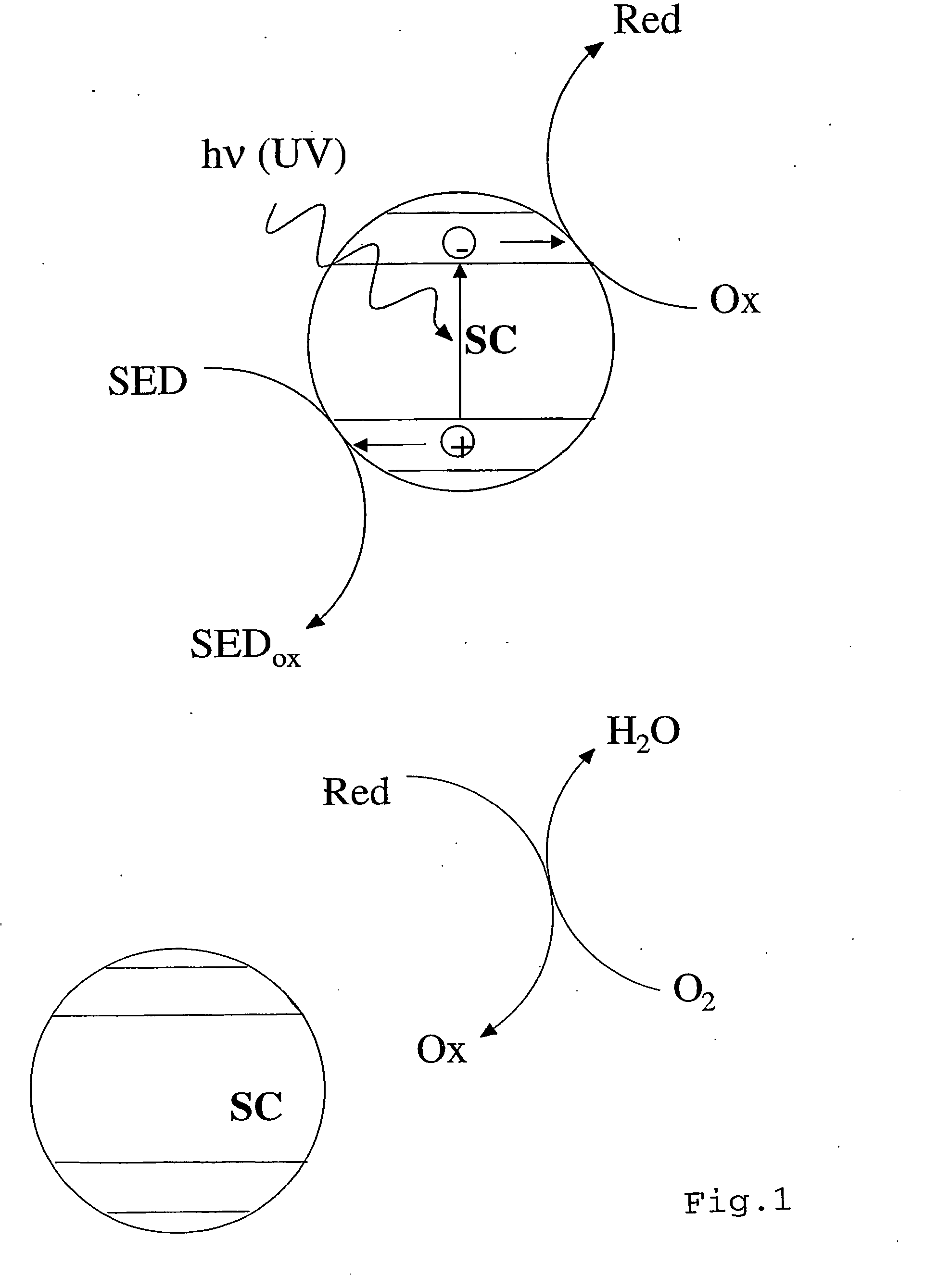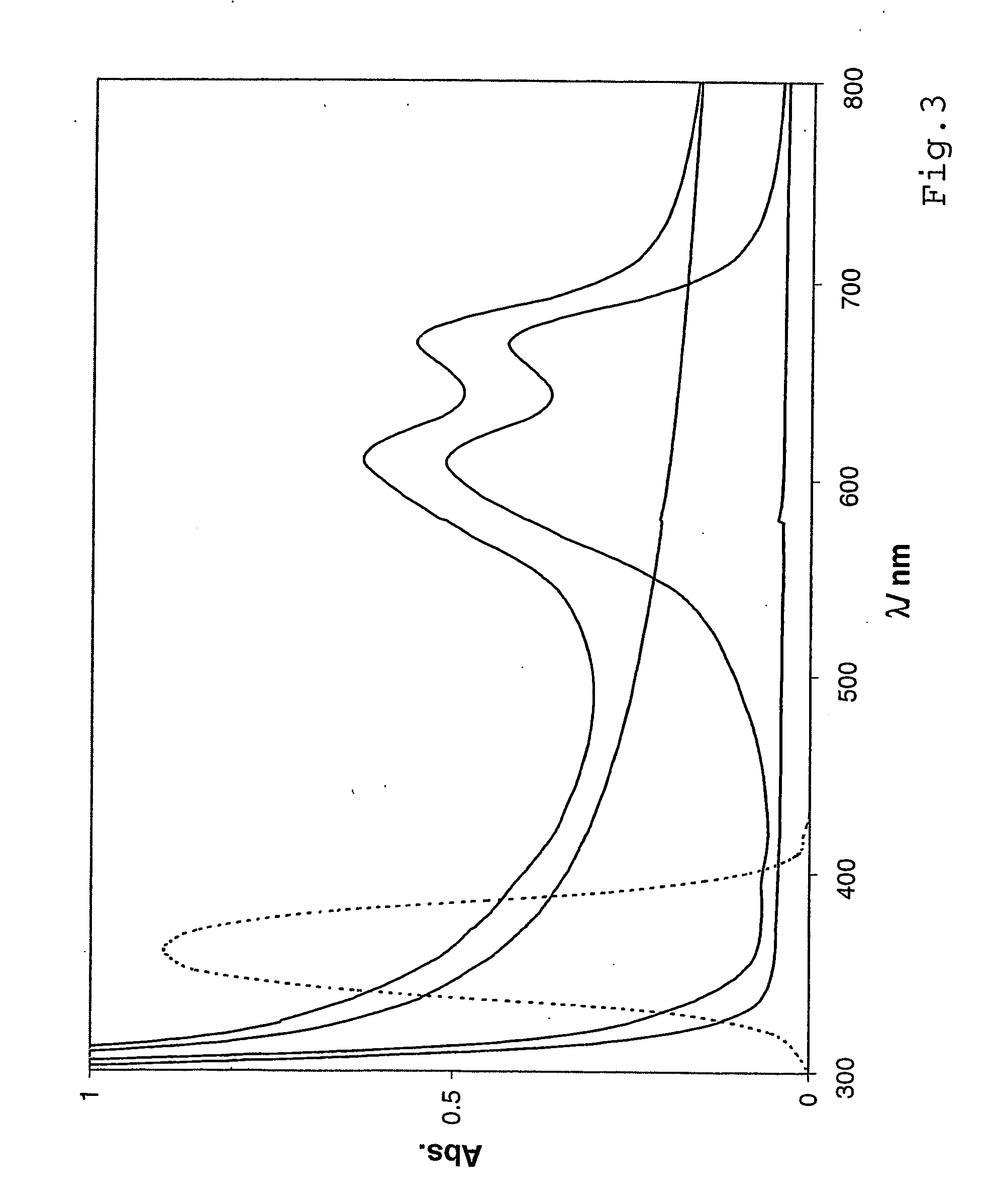Sensor for oxidising agents
a technology of oxidising agent and sensor, which is applied in the field of indicators for detecting oxidising agents, can solve the problems of short shelf life, relatively high cost, and extensive application of oxidising agent, and achieve the effects of slow response, low oxidising agent, and preventing the colour change of uv-light activated indicators
- Summary
- Abstract
- Description
- Claims
- Application Information
AI Technical Summary
Benefits of technology
Problems solved by technology
Method used
Image
Examples
example 1
MB / TEOA / TiO.sub.2 / HEC
[0107] A typical film was prepared as follows: 5 g of a 5 wt % aqueous dispersion of titanium (IV) oxide, i.e. TiO.sub.2 (Degussa P25), 1 g of a 5 wt % aqueous solution methylene blue (MB) and 0.3 g of triethanolamine were mixed with 20 g of a 5 wt % aqueous solution of hydroxyethyl cellulose (HEC) using a magnetic stirrer (30 min). This oxygen indicator ink was then cast onto a glass cover slip as described above. The key UV / visible spectrophotometric features of the final oxygen indicator are illustrated in FIG. 3. The UV / Visible absorption spectrum (solid line; bottom spectrum in FIG. 3) shows that the supporting substrate used in Example 1 does not absorb appreciably UV / Visible light at wavelengths>310 nm. The UV / Visible spectrum of the redox-sensitive dye (MB) alone encapsulated in the HEC polymer is also illustrated in FIG. 3 (solid line, second from bottom spectrum) and shows that the dye has little or no absorbance in the near UV (i.e. from 300-400 nm). ...
PUM
 Login to View More
Login to View More Abstract
Description
Claims
Application Information
 Login to View More
Login to View More - R&D
- Intellectual Property
- Life Sciences
- Materials
- Tech Scout
- Unparalleled Data Quality
- Higher Quality Content
- 60% Fewer Hallucinations
Browse by: Latest US Patents, China's latest patents, Technical Efficacy Thesaurus, Application Domain, Technology Topic, Popular Technical Reports.
© 2025 PatSnap. All rights reserved.Legal|Privacy policy|Modern Slavery Act Transparency Statement|Sitemap|About US| Contact US: help@patsnap.com



